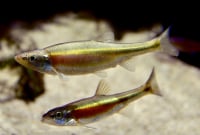Support strong Canadian climate journalism for 2025
A new report warns of severe habitat destruction, biodiversity loss, water contamination and other serious impacts if the Ford government's proposed Highway 413 proceeds across three key watersheds.
Released by advocacy group Environmental Defence, the report is based on research from the Toronto and Region Conservation Authority (TRCA) and Credit Valley Conservation (CVC), and underscores the importance of the Humber River, Etobicoke Creek and Credit River for sustaining optimal living conditions for area residents and diverse ecosystems.
“Everything in a watershed is connected,” said Rebecca Kolarich, water program manager at Environmental Defence and author of the report. Watersheds allow water from rivers, streams or rain to drain into larger bodies of water.
“Watersheds are like veins pumping blood to our hearts. They provide numerous benefits like flood prevention, clean water and habitat for species, while also helping mitigate climate change,” Kolarich said.
They are essential for supporting wildlife, maintaining water quality, providing recreational spaces, and boosting climate resilience, she added.
The report warns Highway 413 would pave the way for urbanization and traffic that disrupts critical ecosystems and introduces harmful pollutants, such as chlorides from road salt into freshwater systems. The highway poses a threat to over 500 species of regional concern in these watersheds, including at least 65 species at risk, and increases the potential for flooding in the Greater Toronto Area (GTA), the report states.
Watersheds are key for the long-term survival of species and ecosystems in the GTA. “We can’t afford to put them, and by extension ourselves, at risk by allowing unnecessary development projects like Highway 413 to be built,” Kolarich said.
If constructed, Highway 413 will cut through 2,000 acres of farmland, cross 85 waterways, and pave over nearly 400 acres of protected Greenbelt land. The impact will be felt in 220 wetlands, destroying critical habitats and disrupting migration routes, food sources, and breeding grounds, severely affecting species like the redside dace minnow. Restoration would be nearly impossible.

“The highway would destroy natural areas that are home to these species, and once they're gone, we can't bring them back to their natural state,” Kolarich warns.
Ford rejects concerns about the project’s impact on species at risk. The provincial government claims Highway 413 is essential for expanding infrastructure in the Greater Golden Horseshoe to accommodate significant population growth in southern Ontario over the next 30 years. Investing in infrastructure is key to Ontario’s long-term economic strategy, with the highway expected to contribute up to $350 million in GDP annually during construction, the government suggests.
One of the most dangerous chemical runoffs from highways is chloride, a component of road salt used to de-ice roads in winter. It can harm human health, freshwater plants and animals, Kolarich said.
According to the report, chloride contamination levels are already rising in the three watersheds. The construction of Highway 413 would exacerbate this problem, turning freshwater habitats into toxic, salty environments.
Drinking water can also become unsafe if infrastructure, such as wells and pipes, corrode because of exposure to high levels of chloride. “Treating groundwater to remove chloride is extremely expensive,” Kolarich says. “And it would be a burden for many municipalities. The smarter solution is to avoid building the highway in the first place.”
According to Kolarich, paving over natural areas like wetlands and forest with hard surfaces like roads and parking lots, disrupts the natural water filtration process and can lead to flooding.
Natural areas absorb rainwater and prevent overflow. “We have seen the impacts that replacing natural areas with hard, impervious surfaces has, especially this past summer with the flooding in Toronto.”

Ontario has been paving over natural areas like wetlands for decades, leaving rainwater with nowhere to go, Kolarich told Canada’s National Observer. “Because Highway 413 is proposed to pave over natural rainwater-absorbing and water-filtering areas in each watershed, we can expect more frequent flooding in the coming years if the highway is built.”
Given the environmental risks posed by Highway 413, Kolarich and other environmental advocates want the project scrapped in favour of more sustainable transportation solutions. One alternative suggested in the report is to expand public transit in the Greater Toronto and Hamilton Area (GTHA). By improving public transit, the region could reduce traffic congestion and lower greenhouse gas emissions without destroying natural habitats.
“The federal government has the legal authority to stop this highway,” Kolarich said. “They need to step in and re-designate Highway 413 for a new impact assessment, especially considering the threats to species at risk and the irreversible damage to our watersheds.”







Comments
Health Canada no longer trues to protect the public. It ignores and hides reports and favours private sector.
No faith any more and tge Minister refuses to anything, but then a Conservative Minister will be worse